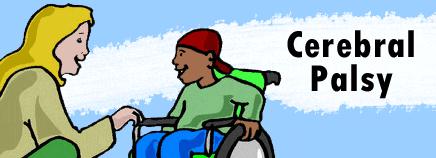Cerebral Palsy Causes, Symptoms, Diagnosis and Treatment

What Is Cerebral Palsy?
Cerebral palsy (CP) is a group of permanent movement disorders that appear in early childhood.
The effect of cerebral palsy on functional abilities varies greatly. Some people are able to walk while others are not. Some show normal to near normal intellectual function, but others may have intellectual disabilities. Epilepsy, blindness or deafness also may be present.
People with cerebral palsy often have underlying developmental brain abnormalities.
Causes Of Cerebral Palsy:
Cerebral palsy, which usually occurs before a child is born, is caused by disruption or abnormalities in brain development. The exact cause for the existence of this abnormality is unknown.
Some factors which may lead to problem in brain development include:
- Mutations
- Fetal stroke
- Lack of oxygen
- Maternal infections
- Head injury
Risk Factor Of Cerebral Palsy:
The following factors increase the probability of developing cerebral palsy:
- Premature birth
- Birth defects
- Problems with placenta
- Low birth weight
- Seizures just after birth
- Asphyxia
- Genetics
- Multiple babies
- Breech births
- Maternal health
- German measles
- Chicken pox
- Exposure to toxins
- Syphilis
- Infant illness
- Bacterial meningitis
- Viral encephalitis
- Severe or untreated jaundice
Symptoms Of Cerebral Palsy:
Signs and symptoms of cerebral palsy may include the following:
- Variations in muscle tone, such as being either too stiff or too floppy
- Stiff muscles and exaggerated reflexes (spasticity)
- Stiff muscles with normal reflexes (rigidity)
- Lack of muscle coordination (ataxia)
- Tremors or involuntary movements
- Slow, writhing movements (athetosis)
- Delays in reaching motor skills milestones, such as pushing up on arms, sitting up alone or crawling
- Favoring one side of the body, such as reaching with only one hand or dragging a leg while crawling
- Difficulty walking, such as walking on toes, a crouched gait, a scissors-like gait with knees crossing or a wide gait
- Excessive drooling or problems with swallowing
- Difficulty with sucking or eating
- Delays in speech development or difficulty speaking
- Difficulty with precise motions, such as picking up a crayon or spoon
Diagnosis Of Cerebral Palsy:
Cerebral palsy can be diagnosed via conducting the following tests and exams:
- Brain scans
- MRI
- CT scan
- Cranial ultrasound
- EEG
- Lab tests
Treatment Of Cerebral Palsy:
Treatment for cerebral palsy can be divided into the following:
- Long term care with a medical care team
- Medications
- Therapies
- Physical therapy
- Occupational therapy
- Speech and language therapy
- Recreational therapy
- Surgery
- Orthopedic surgery
- Severing nerves
By : Natural Health News




